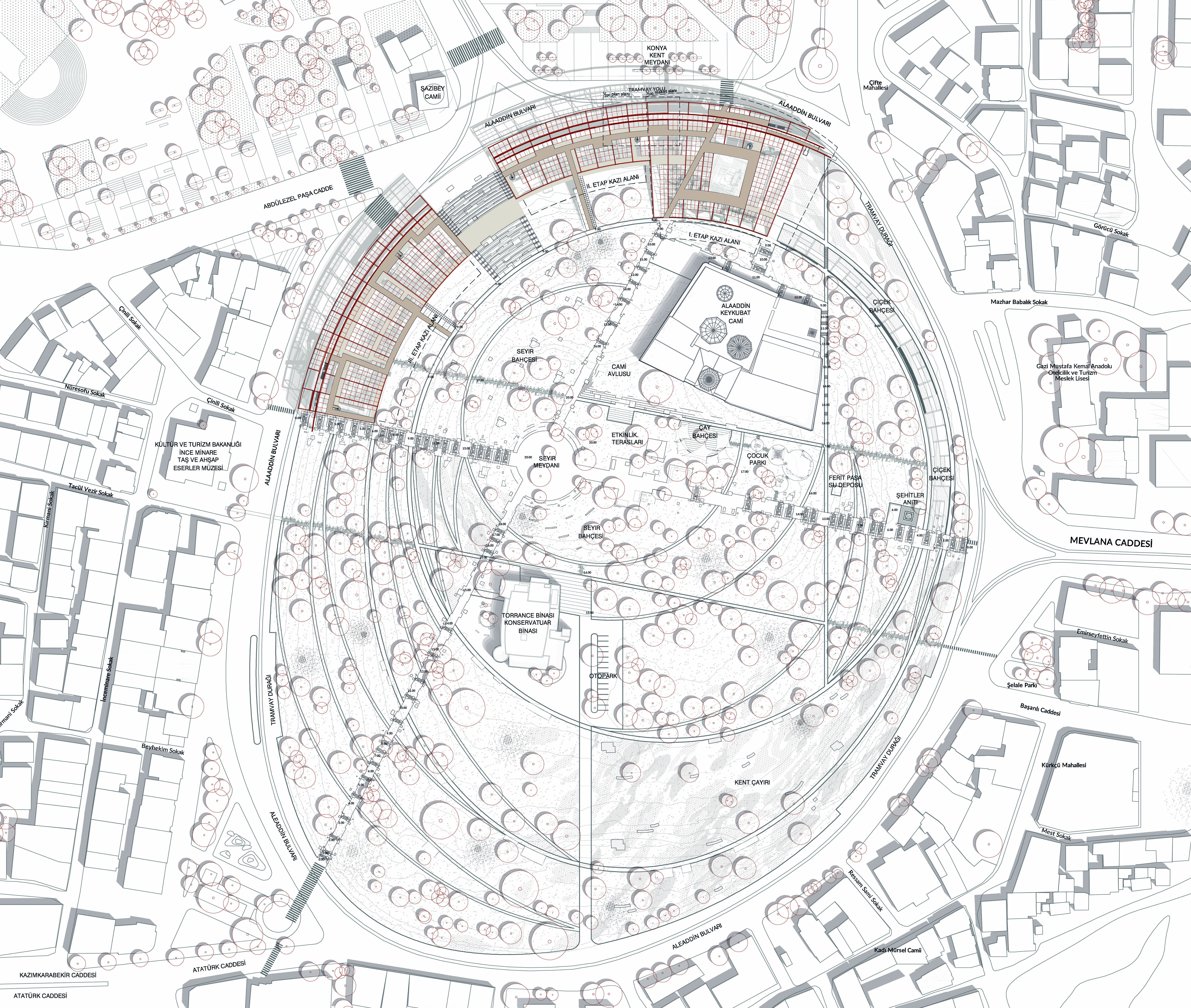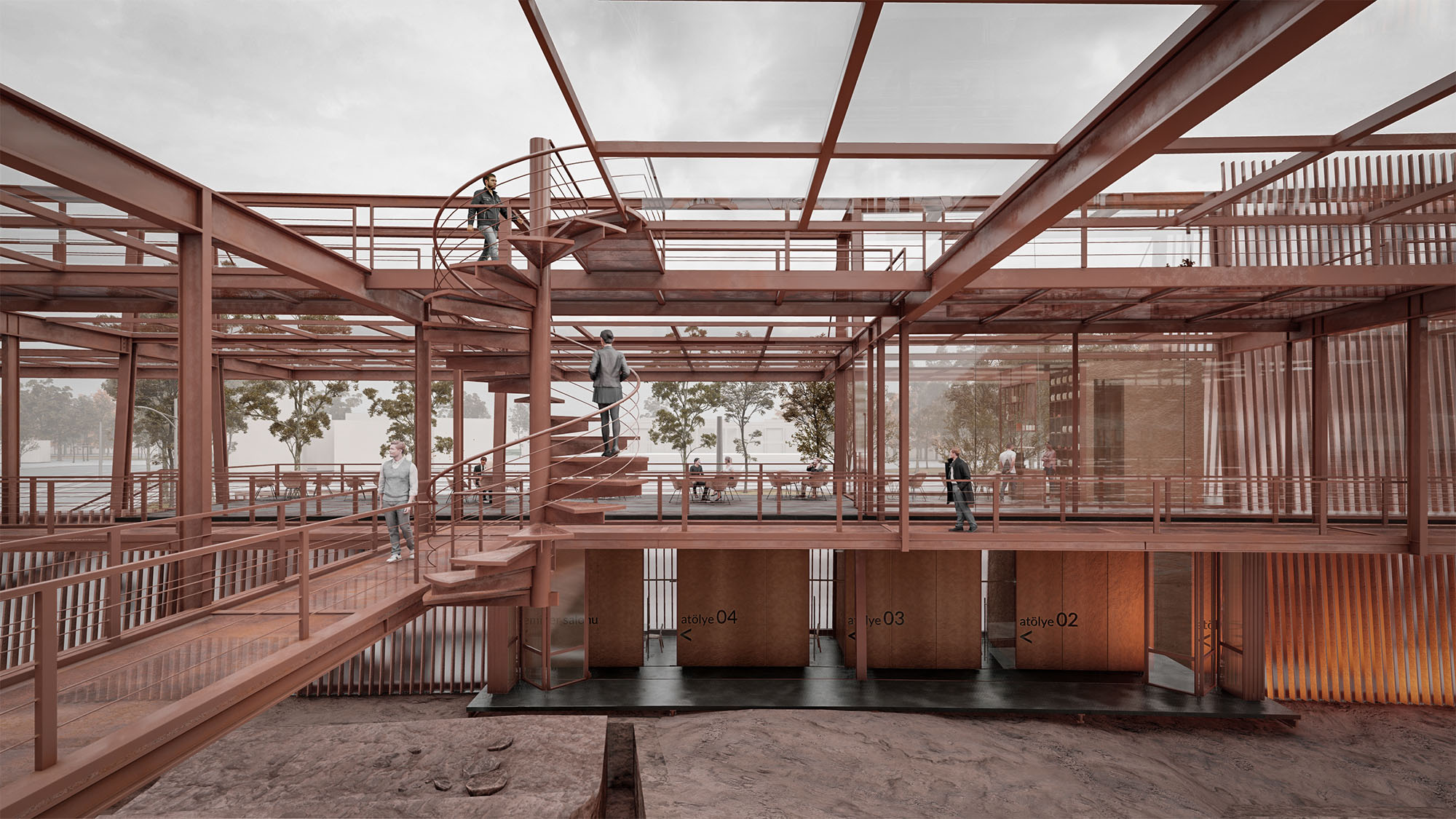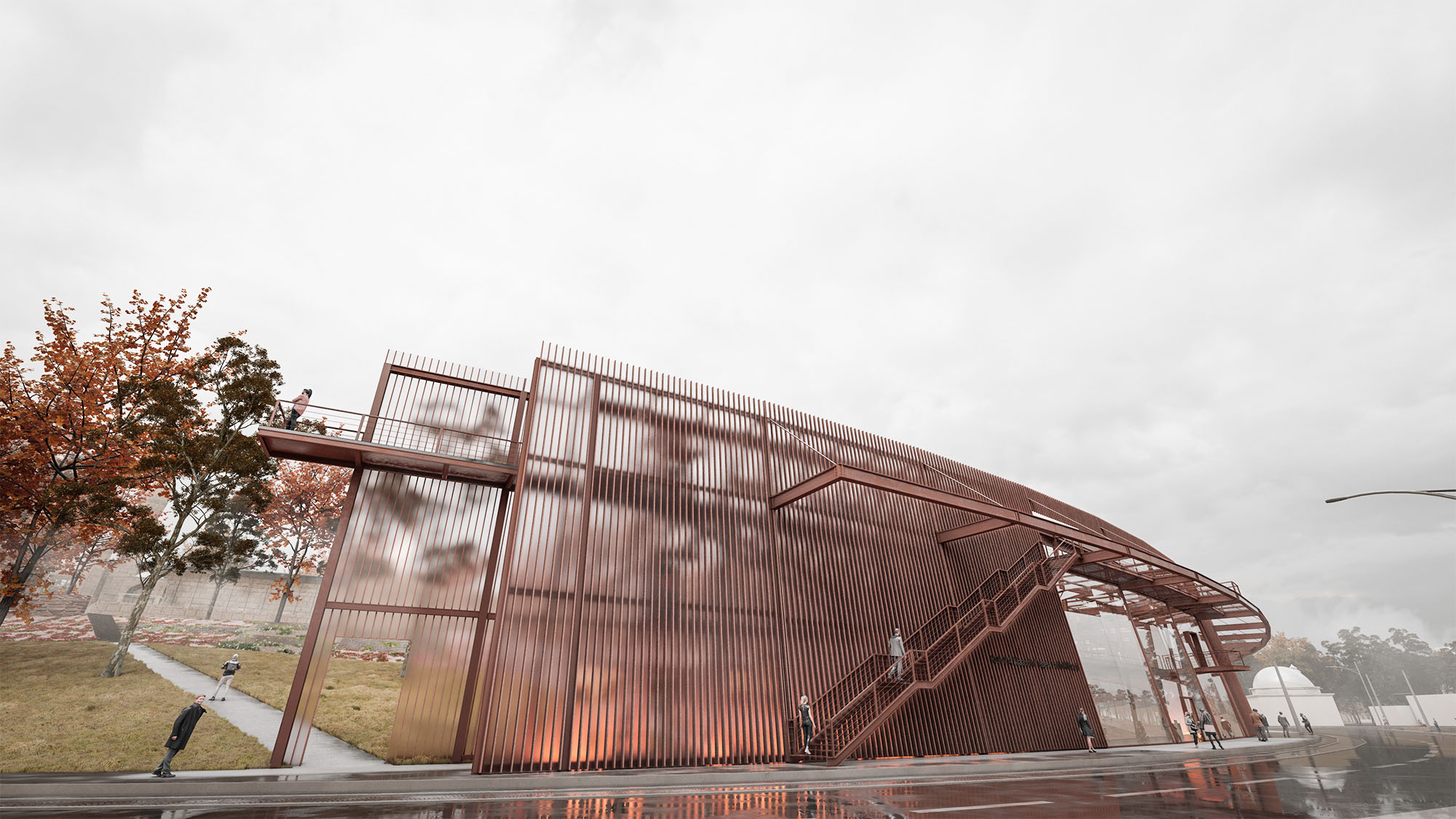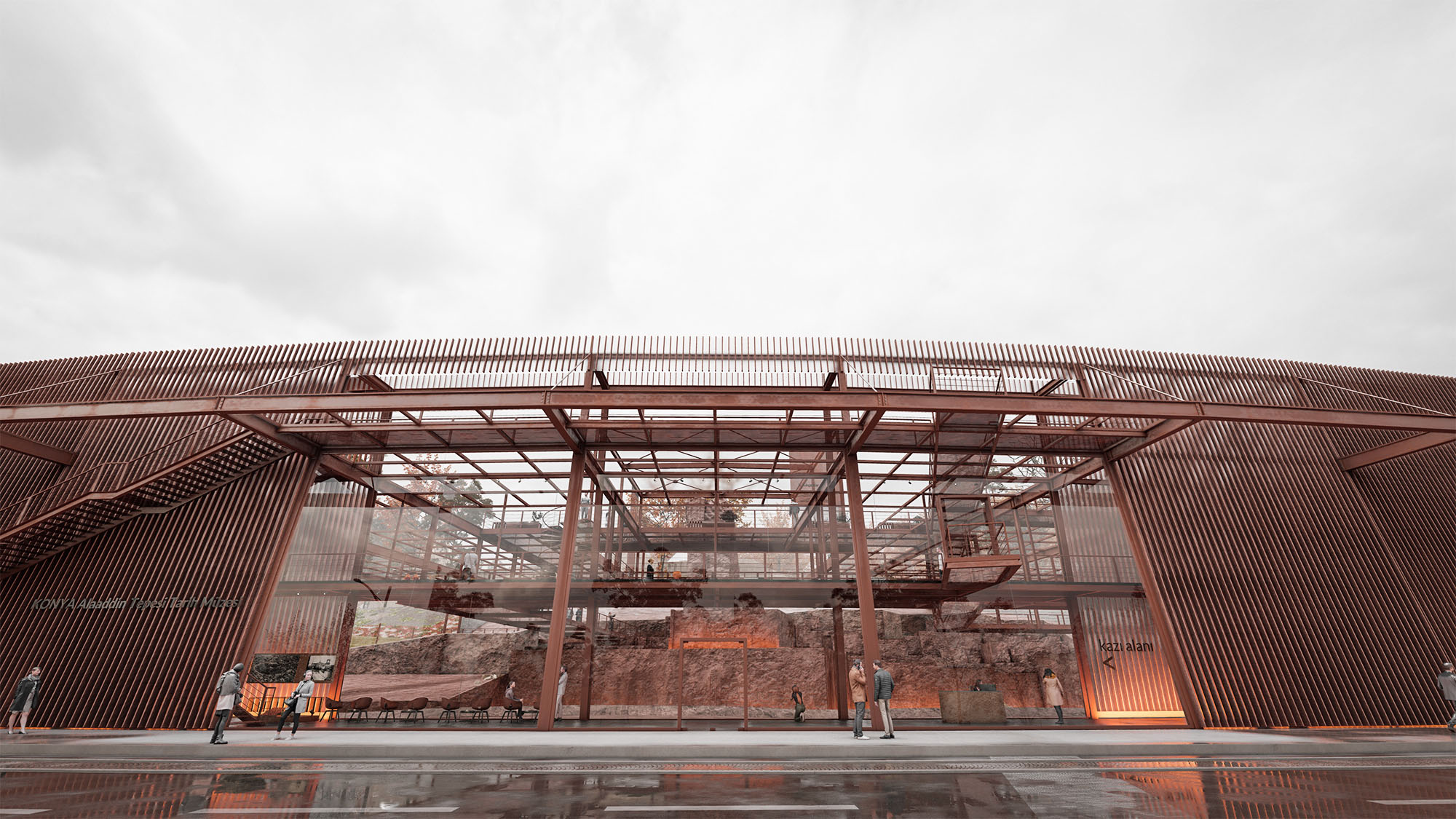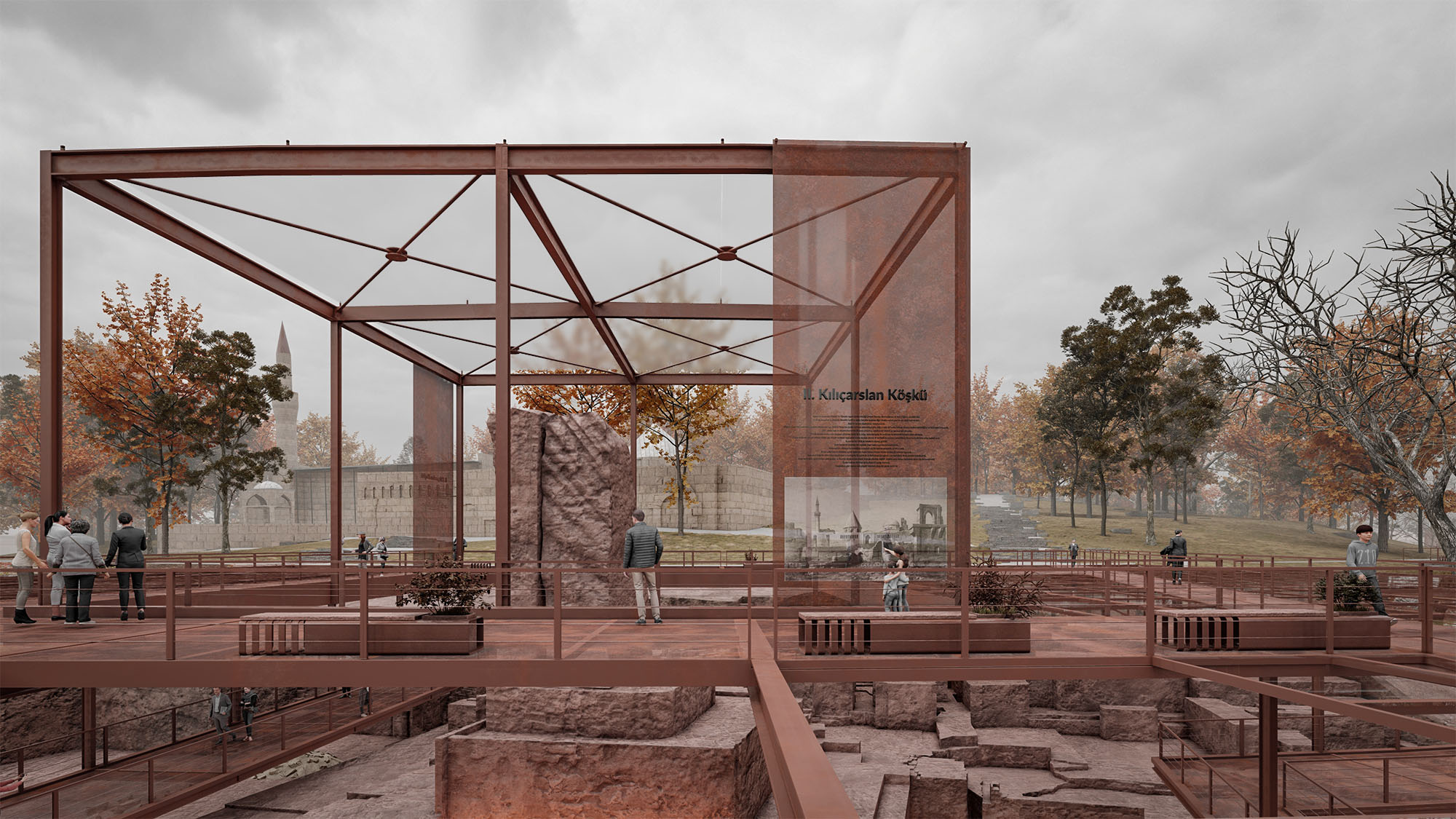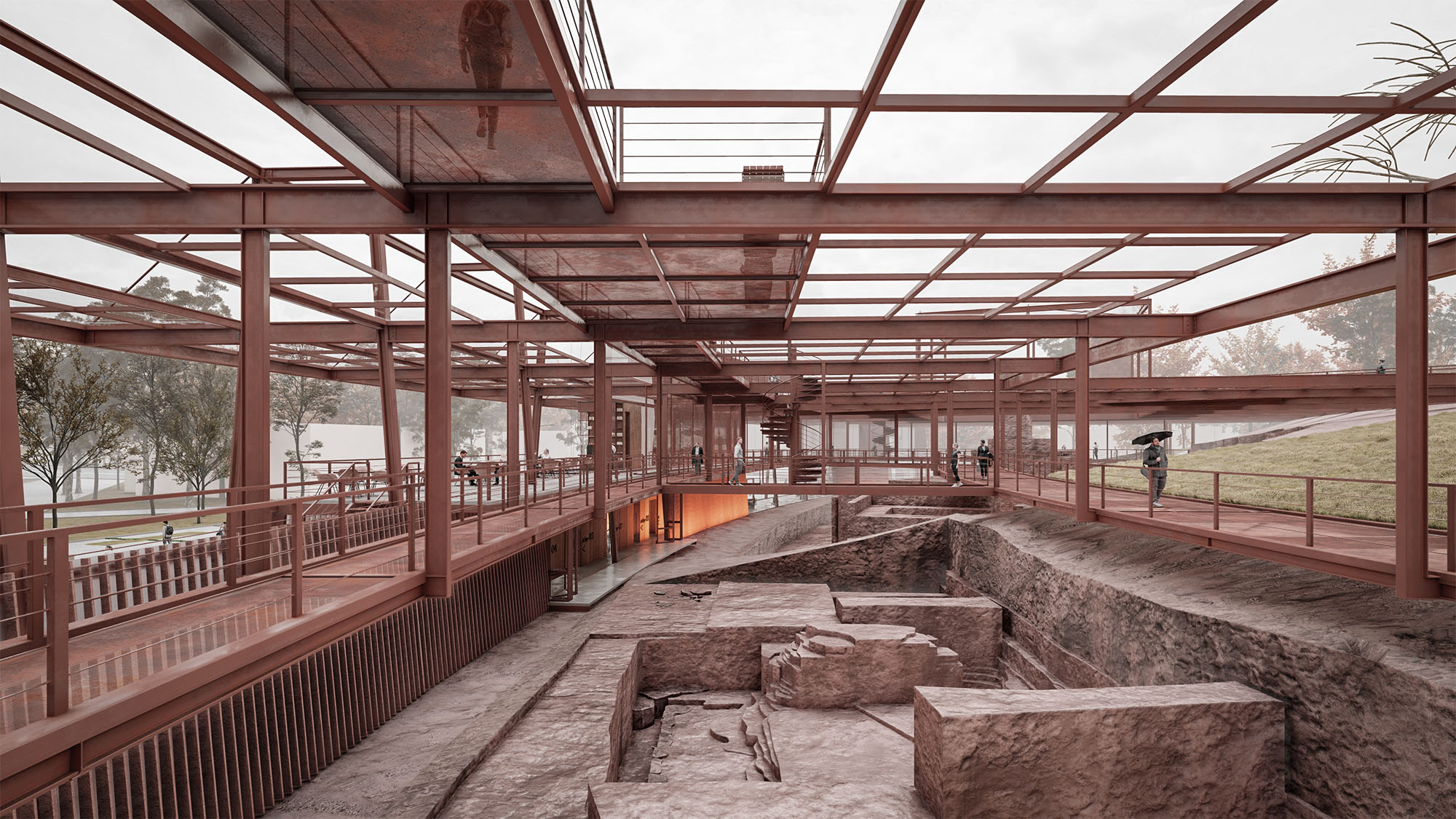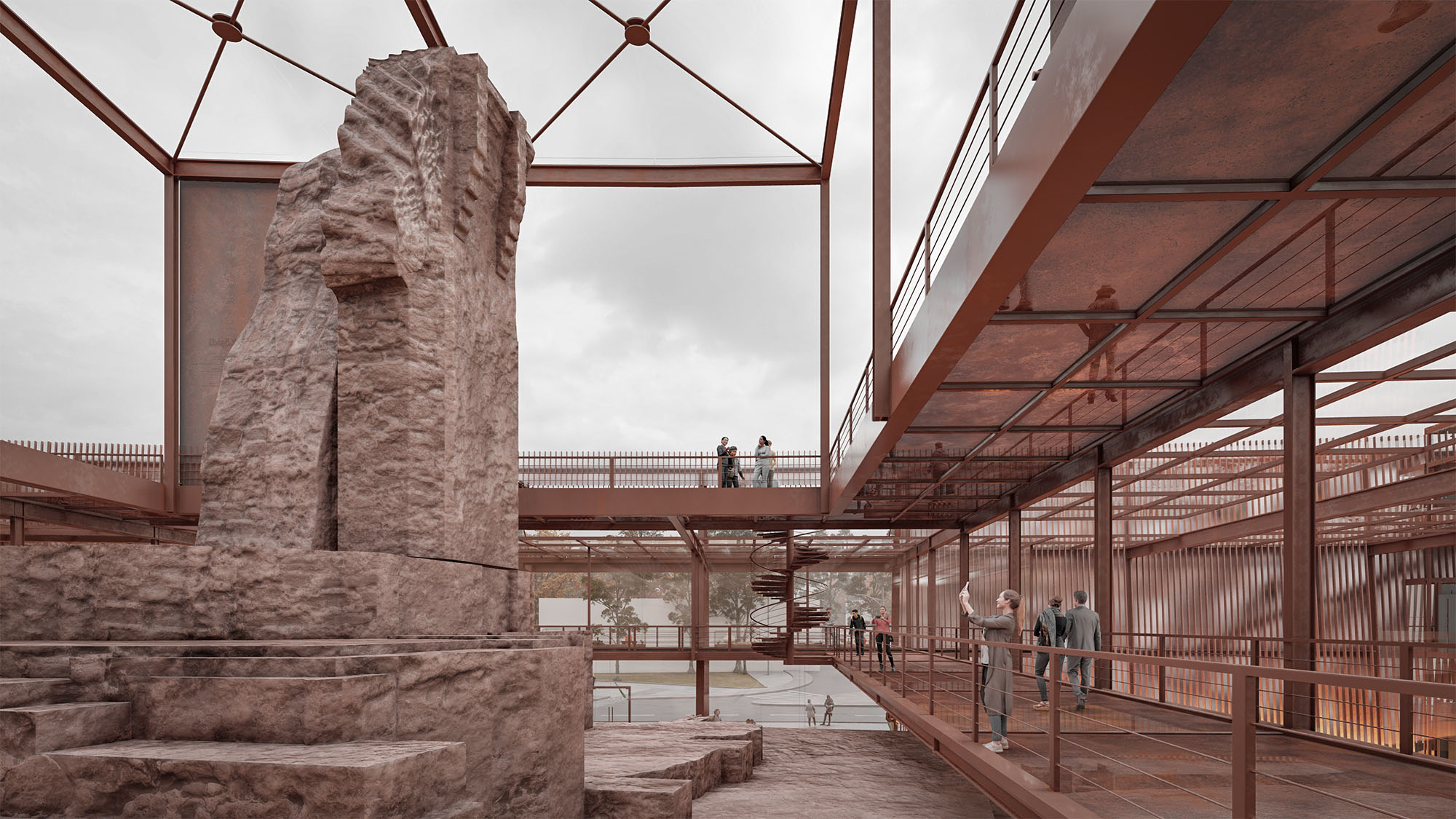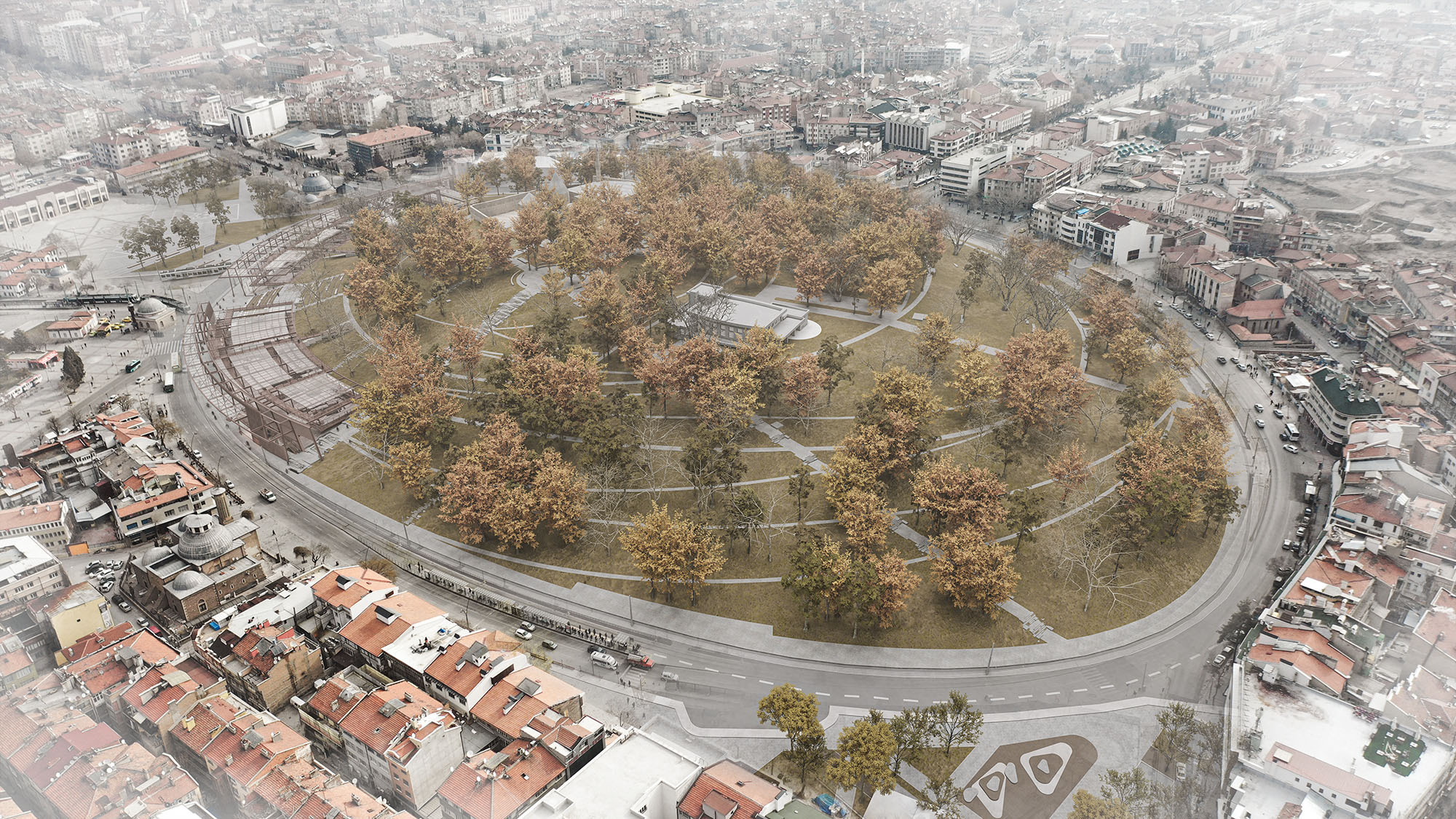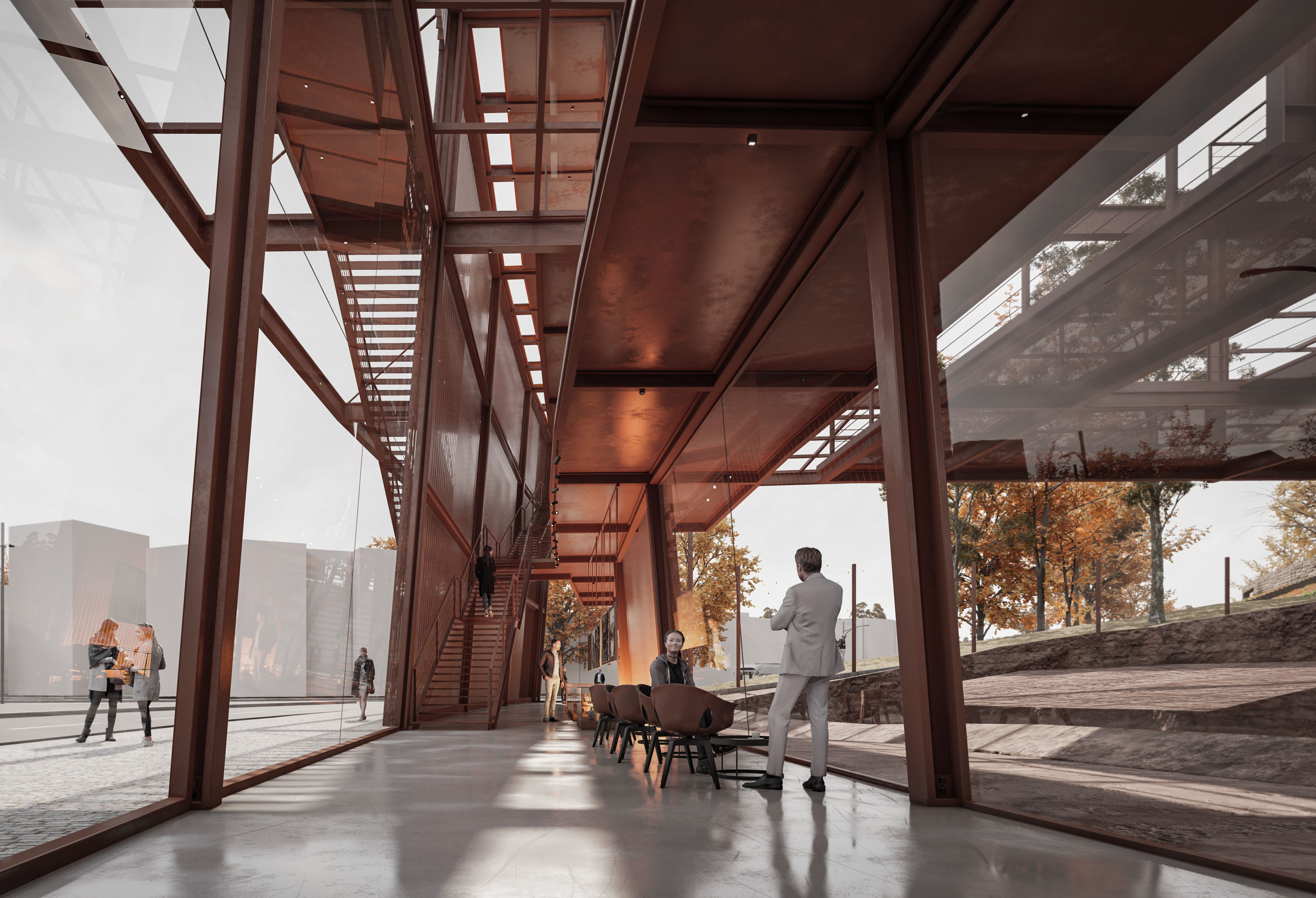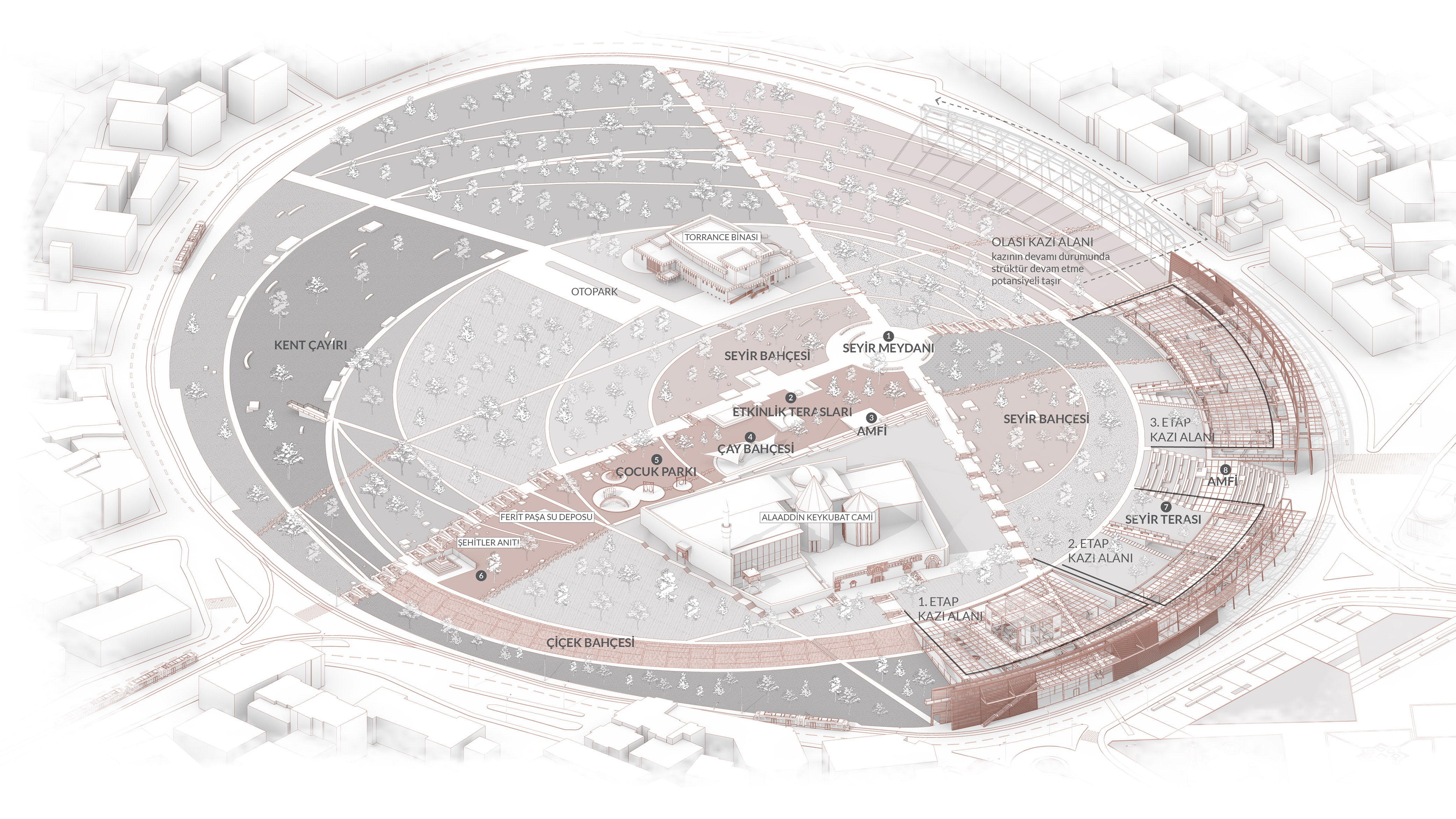Konya Alaeddin Tepesi II. Kılıçarslan Köşkü ve Kazı Alanı Mimari Fikir Proje Yarışması
Konya Alaeddin Tepesi II. Kılıçarslan Köşkü ve Kazı Alanı Mimari Fikir Proje Yarışması
1. Honorable Mention
Location: Alaeddin Hill, Konya
Year: 2023
Employer: Konya Municipality
Category: National Competition, Visitor Center
Project Area: 858 m² Semi-Open Area: 1991 m²
Team: Seden Cinasal, Ramazan Avcı, Gülay Karip, İrem Malgaş, Melih Baktır, Didem Baykal, Ayşe Dağoğlu, Bengüsu Yeşiloğlu, Merve Özduman, Hülya Demirkaya, Günsu Deliktaş, Özlem Satı Kurtçu, Alper Tüfekçioğlu, Osman Ali Ünsal, Yaşar Aydoğan, Selin Kamburoğlu, Eşe Nam, Gürkan Çelik, Rumeysa Turhan, Aybüke Delikurt, Melike Taştemur, Busem Acar, Melis Şimşeker, Ata Kaynarca, Şevval Güngör, Ece Küçükçoban, Özgen Aksoy Demir
Advisors: Özge Yendün, Sedat Kuş
The excavation areas of Alaeddin Hill have been the subject of studies that have been going on for many years, remaining "foreign" to the citizens and the city. Today, this trio is ready to meet again with the re-emergence of the forgotten unique heritage.
The proposed design aims to display the archaeological heritage layers unearthed in the I. II. and III. Konya Alaeddin Hill region along the Excavation Sites, by taking protective measures, and to articulate them to the city with a symbolic structure that will also emphasize the historical importance of the hill. The design; while being a protective boundary between the city, the hill and the historical site, eliminates the physical barrier structure of the archaeological area by providing access between the hill and the city at different levels. Thanks to the various paths planned on the proposed structure, the flow of daily life and the existence of historical and cultural heritage are both grounded and consolidated. The proposed wall structure on the surface where the archaeological area comes into contact with the city will take its place in daily life practices, such as recreational uses on the hill, while crossing the road, waiting for the tram, with its contents such as areas for encountering the remains, information boards, routing elements and urban equipment.
The wall contains the circulation and monitoring elements that make up the excavation experience, and provides viewing opportunities (exhibition house, terraces) against the excavation area and the city with its openings. In other words, the proposal is contrary to the impermeable and inward relationship established by the castle walls, whose ruins have survived; The city tries to trigger new relations between the city and the hill about looking, seeing and understanding.
In this context, while the wall meets the desired lightness, permeability and viewing opportunity at certain angles and approaches, it continues to be a contemporary and up-to-date interpretation of the "city wall" archetype in the past with its holistic tectonics.
The structural building positioned along the excavation areas rises in the direction of Alaaddin Boulevard and acts as an urban landmark that can be perceived by the road and provides visitor entrances. The partially closed cover, which will protect the remains from the external weather conditions as a result of the excavations, is connected to the park at the appropriate elevations and offers an alternative travel setup to the area from different points of view.

